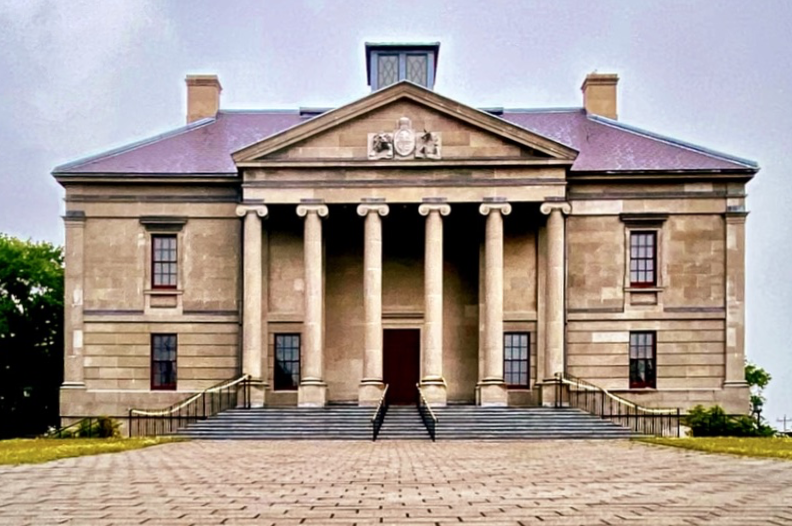Rant, Roar and Riot… Like True Newfoundlanders
90 years ago, on April 5, 1932 Newfoundland got angry. Angry enough to make headlines around the world:
“Following a turbulent day in which an infuriated mob of 10,000 persons besieged and wrecked the Newfoundland legislative building and completely demoralized the police and other civil forces, Sir Richard Squires, Prime Minister of Britain’s oldest colony, was beaten and trampled on this evening until he promised to resign.”
The Story
The early 1930s were difficult times in Newfoundland, as they were in a lot the world. The stock market had collapsed, unemployment was high and the cod fishery was in trouble.
People were frustrated and angry.
Sir Richard Squires, Wikimedia commons, public domain
Making things worse, by 1932 Newfoundland’s Prime Minister Richard Squires and his Liberal government had lost the support of much of the nation. They were facing the persistent public accusations that they were corrupt. Squires’ finance minister had resigned, claiming the prime minister and his cronies had received secret payments.
An investigation was launched but when no hidden payments were uncovered the public thought they were being lied to, and they were mad.
Mad enough to riot.
The 1932 Newfoundland Riot
On April 5, 1932 a crowd gathered at the the Majestic Theatre on Duckworth Street. They were intent on parading to the Colonial Building where they would present a petition demanding a full and proper investigation into the corruption charges. At first, despite their anger, they were adamant that it be a peaceful, productive march.
Colonial Building Riot, Wikimedia Commons/PANL, Public Domain.
When they set out there were maybe 2000 people, but as they worked their way toward the Colonial Building the crowd swelled (according to some reports up to 10 000). They gathered in front of the building. The organizers presented the petition and, instead of receiving a swift response, they were told to wait.
Angry mobs don’t enjoy waiting.
The doors to the Colonial Building were breached and crowd spilled inside. Police attempted to subdue the crowd but succeeded only in agitating them further — according to reports they were using their batons fairly indiscriminately.
“The police, evidently acting under orders, with overcoats off, and batons drawn, charged the people hitting right and left, and doing much bodily injury.”
The crowd began pelting the Colonial Building with rocks, sticks and debris. Windows were smashed and the contents of the legislature were looted. A piano made its way to Bannerman Park where it was destroyed.
While this was unfolding, the Prime Minister was trapped inside. The crowd was determined that he answer to the charges. He must, they thought, be brought to ‘justice.’
It was a dangerous situation. In an effort to subdue the crowds the government asked for the help of the churches. Representatives of the city’s clergy made appeals to the crowd but the mob was not to be deterred.
The assult on the Colonial Building continued.
The Prime Minister Escapes
Squires knew he had to leave the building. He headed out, surrounded by a dozen men. He was aiming for a waiting car, but the mob would have none of it. As he approached the car the mob swelled and cutoff his escape. Squires had to change plans — he could no longer get back to the Colonial Building. Squires and his men did the only thing they could — they took to the streets.
Squires and his entourage ran down the street, followed by the mob. With no immediate avenue of escape, Squires ducked into 66 Colonial Street — a private residence belonging to a Mrs. Connolly.
Trapped inside the house, Squires had to make a new plan. It was decided the only way to safety was through stealth — Squires cut out through the back, over a fence, through a house on Bannerman Street, and to a waiting taxi.
He escaped safely.
The rioters couldn’t believe it. Literally.
A delegation of the mob was let inside Mrs. Connolly’s home to verify that she was not shielding Squires.
The End of the Riot… and Squires
Sir Richard Squires, circa 1920-25, Bain News Service, Library of Congress, Public Domain
Meanwhile, on the street a light rain began to fall and that seemed to dampen spirits and, with Squires no longer an available target, the rioters began to disperse.
The police kept guard through the night and by morning the extent of the damage was evident — the Colonial Building was ransacked. There was damage and looting on New Gower Street, and lots of liquor was stolen.
Squires saw the writing on the wall — he resigned, triggering an election. His Liberal party lost, winning only 2 of 28 seats. It was to be the last election held before Newfoundland relinquished self-government in 1934, effectively ending democracy until 1949 when Newfoundland joined Canada.
Squires retired but remained vocal in his opposition of the commission of government.
He died in 1940 at the age of 60.
-
Book: The Story of the Colonial Building (PDF)
Heritage NL: Riot of April 5, 1932: Civil Unrest
Time Magazine, June 27, 1932: Squires & Lady Unseated



